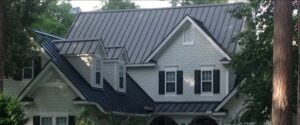Ensuring Warmth: Roofing Insulation Techniques
When it comes to roofing projects, big, small, residential or commercial, roofing insulation plays a large role. While selecting a roof insulation, thermal needs, satisfying energy codes, and delivering a roof assembly acceptable to the facility’s insurance carrier must all be met.
When the correct insulation is chosen and installed successfully, it becomes an integral part of the roof’s assembly. It functions in harmony with the membrane and structural deck. The result is a roofing system that lasts over the long term. These are the seven most common metal roof insulation types and their unique characteristics.
Roof Insulation Types
Wood Fiber:
An organic insulation board composed of wood, cane, or vegetable fibers mixed with fillers and binders. The insulation can be impregnated with asphalt or asphalt coated to enhance moisture resistance. You will need to consider uncoated insulation in applications where the selected roof covering is incompatible with asphalt-based coatings.
Perlite Insulation Board:
Composed of perlite combined with organic fibers and binders. The top surface of the insulation board features an asphalt coating or a proprietary coating formulated to limit adhesive asphalt absorption into the insulation during the roof-membrane application.
Polyisocyanurate:
A closed-cell foam plastic insulating core is sandwiched between A) organic or inorganic felt facers B) glass-fiber mat facers or C) glass-fiber-reinforced aluminum foil facers. A blowing agent expands the foam material, creating the closed-cell structure that gives the insulation its high thermal resistance. Air diffusion into the insulation cell structure results in a slight reduction of thermal resistance, but its insulating efficiency remains higher than other rigid insulation.
Polystyrene Insulation:
There are two types of polystyrene insulation, expanded and extruded. Expanded polystyrene consists of the polystyrene polymer impregnated with a foaming agent. The material expands when exposed to heat and is molded into a uniform, closed-cell insulating material. Expanded polystyrene is available in densities of 0.70-3 pounds per cubic foot (pcf). Most roof-covering manufacturers require a minimum density of 1.25 pcf.
Extruded Polystyrene:
consists of a blended polystyrene polymer heated and run through an extrusion process. The material is exposed to atmospheric conditions, which causes it to expand and create its closed-cell structure. Extruded polystyrene is available in densities of 1.3-2.2 pcf.
Cellular Glass:
Composed of crushed glass combined with a foaming agent. The components are mixed, placed in a mold, and heated, which melts the glass and decomposes the foaming agent. This process causes the mixture to expand and create uniform, connected closed cells to form the insulating material.
Gypsum Board:
A non-structural, non-combustible, water-resistant, treated gypsum core panel. The board is available with a proprietary, non-asphaltic coating on one side to enhance roof-membrane adhesion. Gypsum board typically is used as a cover board over foam-plastic insulations, as a thermal barrier over a steel deck, or as a vapor-retarder substrate.
Renoteck Roofing has been installing metal roofs in Calgary for years. Extensive experience and knowledge is applied to provide you with the best possible roof.




